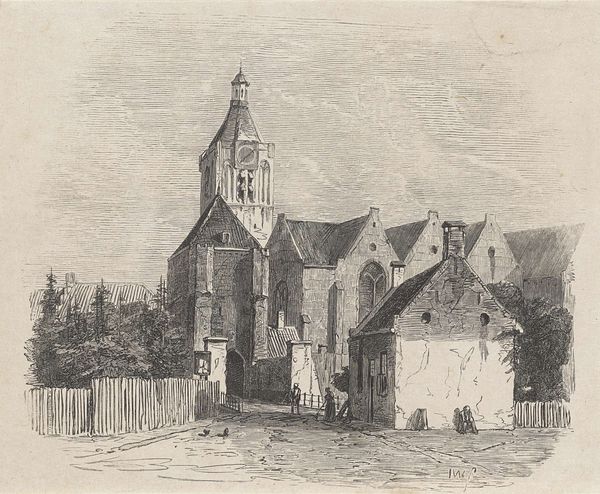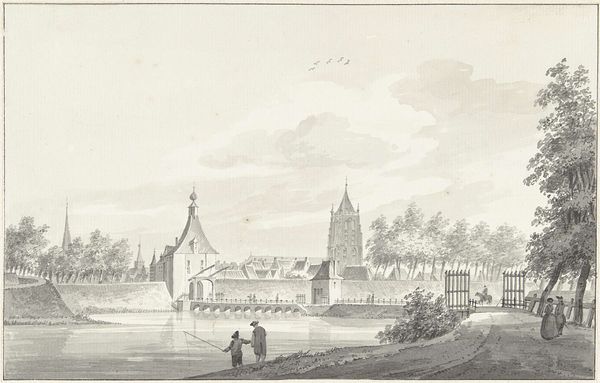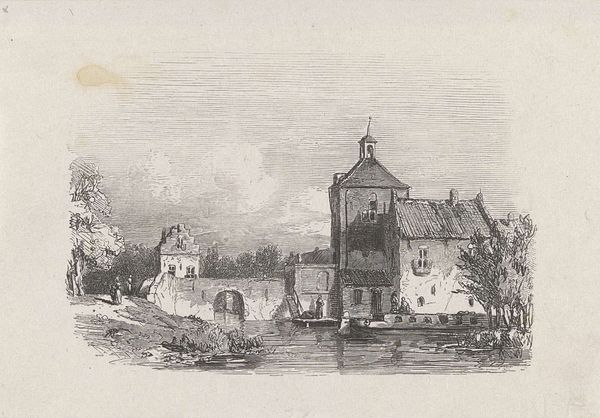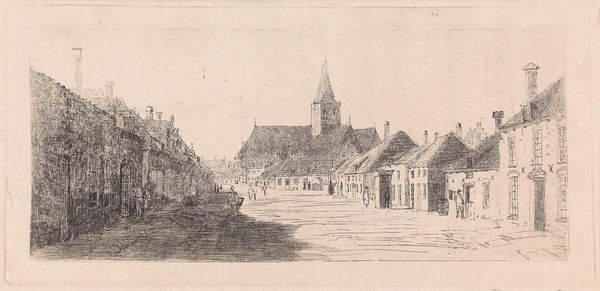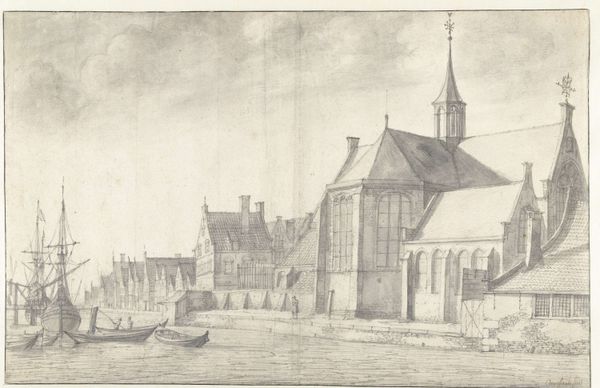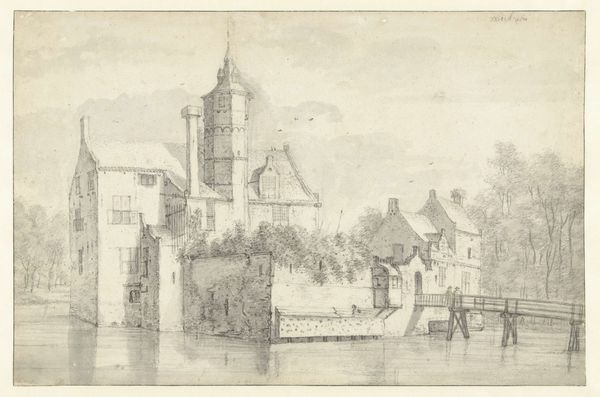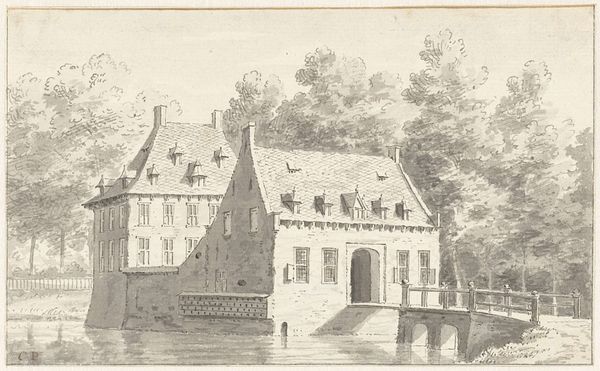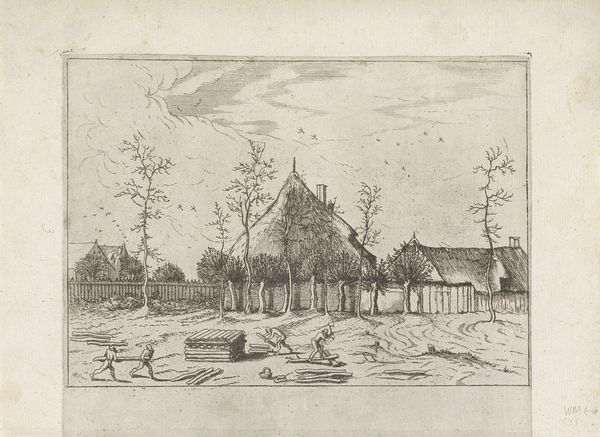
drawing, print, pen, engraving
#
drawing
#
quirky sketch
#
dutch-golden-age
# print
#
sketch book
#
landscape
#
personal sketchbook
#
idea generation sketch
#
sketchwork
#
pen-ink sketch
#
sketchbook drawing
#
pen
#
cityscape
#
storyboard and sketchbook work
#
sketchbook art
#
engraving
#
realism
#
initial sketch
Dimensions: height 109 mm, width 153 mm
Copyright: Rijks Museum: Open Domain
Curator: "Stadsgezicht met een stadspoort aan het water," dating from 1836-1912 by Isaac Weissenbruch. It’s a pen and engraving that really captures a tranquil urban scene. The linework is really interesting. How do you respond to the image? Editor: It has a quiet sort of feeling. It feels very… intentional, like he knew this place intimately. What can you tell me about the processes behind this kind of drawing? Curator: Well, consider the materials. We have pen and ink on paper, but it is made to replicate the process of print making. That tells me a lot. Print implies dissemination. This is about making images broadly available, possibly for an audience that has never been to this location, who would likely consume such images casually. We might think about these in the context of other similar drawings from this time and location. Is this an isolated unique view or something more formulaic? Editor: I see what you mean! So the method indicates something about audience consumption… That engraving aspect is intriguing; was this a common form for distributing images of cities? Curator: Exactly! Engravings allowed for multiple reproductions, playing a vital role in disseminating visual information in the pre-photographic era. This points to an emerging market for visual representations of urban landscapes and cityscapes. So, consider Weissenbruch less as a solitary artistic genius and more as a cog within a system of production and consumption. Editor: Fascinating. So the 'art' is not just in the individual skill but in the wider material context of image creation? It gives me a completely different appreciation of the work when I start to see it connected to this history. Curator: Precisely. It's about the labor involved, the systems of distribution, and how these images shaped perceptions of place and progress.
Comments
No comments
Be the first to comment and join the conversation on the ultimate creative platform.
